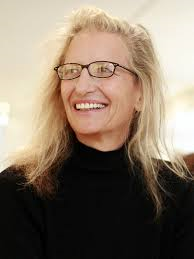Annie Leibovitz
Contents
[hide]Country
United States
Birth - Death
1949 -
Occupation
Photographer
Description
Annie Leibovitz is one of the world’s most noteworthy contemporary portrait photographers. Her pictures of celebrities have recorded history in the making and emotionally impacted their audience. Her popularity and that of her photographs and subjects are unmatched by any other photographer, past or present.
Trained as an artist at the San Francisco Art Institute in the United States, Leibovitz chose to focus on photography as her medium after graduation. Her first position was with Rolling Stone magazine, which she joined in 1970, becoming its Chief Photographer in 1973. This immediately gave her access to various celebrities in the music, arts, and entertainment industry that would be the subject of her work.
Examples of such early notable work include photographs of the Rolling Stones (1971, 1972), John Lennon and Yoko Ono (1980), Bruce Springsteen, Fleetwood Mac (1973), Joan Armatrading (1978), and many more. Even at such an early stage in her career, these photographs and their music celebrities were being recorded in spectacular style for posterity. Leibovitz’s unique use of lighting, elaborate staging, and shooting angles became a trademark of her style. Many of her photographs were used for album covers for the artists.
Leibovitz left Rolling Stone magazine in 1983 to join another celebrity publication, Vanity Fair magazine. It was here that she was exposed to film and television stars, writers, and political figures. Examples of her famed portrait work during this stage of her career include Demi Moore, Whoopi Goldberg, Bette Midler, Mikhail Baryshnikov, Arnold Schwarzenegger, Queen Elizabeth II, Luciano Pavarotti, and more. At this time, she also began photography work for advertising clients, notably American Express, Honda, The Gap, Nike, Arrow Shirts, and more
As her fame grew so too did her awards and recognitions. Leibovitz received the American Society of Magazine Photographers ‘Photographer of the Year’ award in 1983. In 1991 she became the first woman and only the second living photographer to show at the National Portrait Gallery in Washington D.C. That same year she was made a Commander de l’Ordre des Arts et des Lettres by the French government. In 2000, she was the first in a group of Americans to be designated a Library of Congress Living Legend.
The history of her photographic work has been shown in several retrospectives around the world. A major retrospective was held at the Brooklyn Museum in 2006-7. Others have occurred in Washington, San Francisco, and Berlin. Similarly, eleven books of her work have been authored by Leibovitz, including her best-seller Photographs: Annie Leibovitz 1970-1990 which accompanied her 1991 show at the National Portrait Gallery. A documentary of her life was produced in 2009 for public television’s American Masters series.
Annie Leibovitz had a long-term relationship with writer Susan Sontag for over a decade until Sontag’s death in 2004, though neither would publicly discuss the intimacy of such relationship. This reticence brought criticism from many in the LGBTQ community. However, details were provided in the biography Susan Sontag: The Making of an Icon by Carl Rollyson and Lisa Paddock.
It was with Susan Sontag’s passing that Annie Leibovitz entered into a period of financial difficulties. It is reported that Leibovitz had to pay hefty estate taxes on property left to her by Sontag. She was forced to borrow heavily using her royalty income and artwork as collateral, and she faced several lawsuits from creditors throughout the repayment period. It is an egregious example of the unfair tax treatment of same-sex couples relative to married heterosexual couples that eventually led to changes in Federal government recognition of LGBTQ couples for tax and other purposes.
The unique style of Leibovitz’s photography is unmatched by any other photographers in history. She is noted for eliciting dramatic movement and unusual poses from her portrait subjects. These are recorded history of those subjects, a talent that has come from a living legend photographer.

